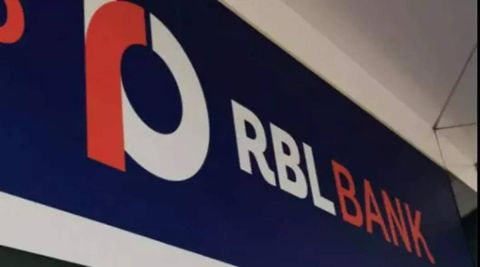RBL Bank Share Price Target at Rs 250: Emkay Global Research
RBL Bank has emerged from a strenuous fiscal year marked by elevated stress in its retail loan books. With strategic clean-up measures now behind, the bank stands well-positioned for a recalibrated growth trajectory, particularly in its secured lending business. Emkay Research has reiterated its BUY rating on RBL Bank, revising the 12-month target price to Rs 250—a potential upside of nearly 17% from the current levels. Strong capital adequacy, improved asset quality, and a renewed focus on profitability in the retail segment offer a compelling case for investors looking for long-term value.
RBL Bank Cleans House, Eyes Profitable FY26
Management confirms major portfolio restructuring completed: RBL Bank, under the stewardship of MD and CEO R. S. Kumar, has largely dealt with the overhang from its unsecured retail loan stress. The microfinance (MFI) and credit card portfolios, which saw heightened delinquencies in FY25, are now more streamlined.
Retail franchise gets a leadership facelift: In a bid to rejuvenate its retail operations, the bank has appointed industry veterans Kumar Ashish and Himanshu Mishra to spearhead asset origination and branch banking, respectively. Their experience is expected to boost the secured retail product suite, including mortgages and vehicle loans.
Secured Lending to Anchor Growth in FY26
Strategic pivot toward secured assets: With the bank's unsecured retail stress largely addressed, the focus now shifts to secured segments. These are anticipated to grow at a robust 25-30% annually, aiding overall loan book expansion by 16-17% in FY26.
Retail profitability in sight: Thanks to tapering credit costs and reduced sourcing expenses, the retail book is expected to turn profitable. Credit cards and MFI segments are poised for moderate growth—8-10% for cards—with the card RoA expected to rise to 4-5% from just 1% in FY25.
Balance Sheet Remains Robust
Capital buffers above regulatory thresholds: RBL’s CET-1 ratio stands at 14.1%, offering a cushion for any macro headwinds. The bank is in no rush to raise capital and intends to do so only at a favorable valuation.
Improving cost-efficiency: The operating expense ratio is expected to improve gradually, further supporting RoA expansion. Emkay estimates RBL’s RoA will increase from 0.5% in FY25 to between 0.8% and 1.2% by FY28.
Asset Quality Turning the Corner
Stress metrics exhibit downtrend: Gross NPAs are projected to fall from 2.7% in FY24 to 2.2% by FY28. Net NPAs are expected to remain well-contained at 0.4-0.6%, signaling sound provisioning practices.
Improved provisioning cover: Provision coverage stands elevated at 89% in FY25, ensuring a solid buffer against further slippages.
Financial Highlights
Top-line and bottom-line rebound expected: Net profit is set to rise sharply from Rs 6,953 million in FY25 to Rs 12,133 million in FY26, eventually reaching Rs 24,709 million by FY28.
Loan and deposit growth back on track: After subdued loan growth of 10.3% in FY25, the bank is forecasted to achieve 14.4% in FY26 and 18.2% by FY28. Deposit growth is also expected to rebound to 19% by FY28.
Here’s a snapshot of key financial metrics:
| Metric | FY25 | FY26E | FY27E | FY28E |
|---|---|---|---|---|
| Net Profit (Rs mn) | 6,953 | 12,133 | 18,798 | 24,709 |
| Loan Growth (%) | 10.3 | 14.4 | 16.2 | 18.2 |
| NIM (%) | 4.9 | 4.7 | 4.8 | 4.9 |
| RoA (%) | 0.5 | 0.8 | 1.0 | 1.2 |
| RoE (%) | 4.6 | 7.5 | 10.7 | 12.7 |
Valuation and Recommendation
Stock remains attractively priced: RBL Bank trades at just 0.8x FY27E Adjusted Book Value (ABV), offering a value proposition amid sector peers. Emkay’s upward revision in target price by 11% reflects increased confidence in the bank’s return metrics and balance sheet strength.
Revised target price: Rs 250: The updated price implies a 16.8% potential upside from the current market price of Rs 214. The investment thesis hinges on a successful pivot to secured lending, normalization of credit costs, and operational efficiency.
Risks to Outlook
External shocks could affect asset quality: Any macroeconomic disruption, especially in the unsecured lending space, could derail asset quality improvements.
Execution risks in retail transformation: While management has made notable hires and changes, execution will remain critical for sustaining profitability.
